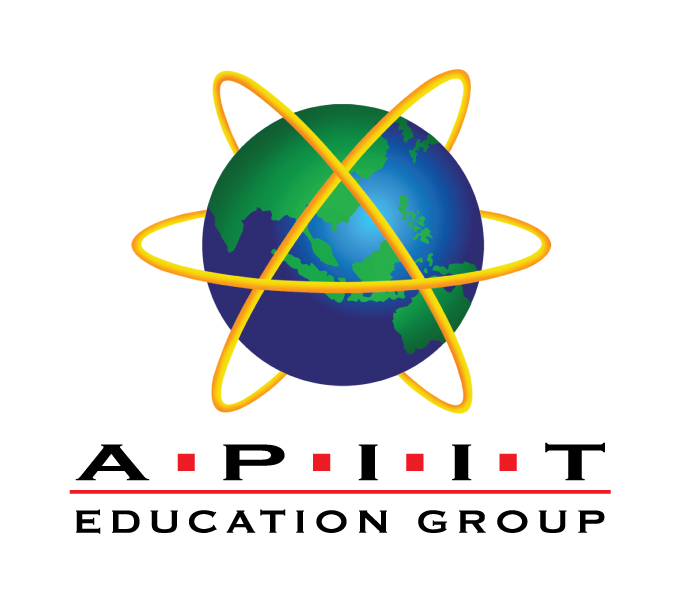Why choose APU?

Dual Degree
APU-DMU Dual Degree Programme
Requirements
Admission Requirements
- 3 Credits in at least 3 subjects at SPM level, with a minimum of a pass in Bahasa Malaysia and Sejarah (History);
- 3 Credits (Grade C & above) in at least 3 subjects at IGCSE/O-Levels;
- 3 Credits (Grade B & above) in at least 3 subjects in UEC;
- Pass relevant Certificate Programme or its equivalent;
Any qualification that APU accepts as equivalent to the above.
Note: The above entry requirements may differ for specific programmes based on the latest programme standards published by Malaysian Qualifications Agency (MQA). The qualification and entry requirements for the programmes will be determined based on the “Comparison List of Equivalency of International Qualifications with SPM (O-Levels equivalent) and STPM (A-Levels equivalent)” published by Malaysian Qualifications Agency (MQA).
- IELTS : 4.5
- TOEFL IBT : 33
- Pearson (PTE) : 43
- MUET : Band 3
** Credit in English is required at SPM/IGCSE/O-Level or equivalent.
Programme Outline
What We Teach
This APU Diploma in Design & Media is designed to provide:
- Provide a programme that covers the academic aspect as well as the vocational aspects of Design and Media.
- Prepare students for careers in the Design and Media environment.
- Provide students with academic and professional skills to develop solutions requiring a holistic outlook in Design Studies.
- Provide students with critical, independent and cooperative learning skills so as to facilitate their response to continuous future international change.
- Develop students’ intellectual skills, communications ability and team working capability.
- Provide students with opportunities for progression into Degree Programmes of Design and Media standard in relevant areas.
-
Common Modules
-
Semester 1
In the first semester, students gain vital skills for their academic journey. They will explore fundamental Design and Media concepts, covering drawing techniques, idea generation, trend analysis, visual thinking, graphic design history, and introductory use of software like Adobe Photoshop and Illustrator.
Modules
- Academic Research Skills
- Imaging/Production Skills for Design
- Trends and Visual Thinking
- Introduction Graphic Design
Semester 2
Students will enhance communication prowess and grasp pivotal art theories and practices within the creative industry. They’ll delve into advertising principles, honing effective communication techniques. Through marker renderings, they’ll refine technical hand-drawing skills, while collaborative group work will foster innovative problem-solving aligned with provided project briefs.
Modules
- Informing the Masses: Advertising and the Media in the 21st Century
- Visual Art Theory and Practice
- Drawing & Presentation Techniques
- Professional Communication
- Introduction to Creative Project
Semester 3
Students will delve into project management theories and diverse data collection research methods, crafting effective design solutions in larger teams. They will learn advance drawing methods for character and environment conceptual art, while exploring complex software like Maya and Toon Boom for theoretical and practical insights into 2D animation and 3D imaging.
Modules
- Introduction to Project Management
- Illustration for Concept Art
- 3D Pipeline
- Animation Principles
Semester 4
Students will delve into crafting animated graphics – merging visuals with motion for compelling narratives. They will employ tools to create imaginative visuals through digital illustration, while cinema film analysis will enrich their comprehension of visual language, narrative structures, and film’s cultural context. The introduction to entrepreneurship equips students with crucial insights into the creative industry’s business facets, nurturing innovation. Based on their chosen design pathway, they will propose ideations and concepts to be executed in their Final Project.
Modules
- Motion Graphics
- Fundamentals of Entrepreneurship
- Digital Illustration Techniques
- Cinema Film Analysis
- Major Project Preparation
Semester 5
The final semester will focus on 3D animation techniques, teaching students how to bring objects to life through motion, as well as exposure to the evolving media landscape and communication theories, providing insights into modern message transmission. At the end of their semester, students will proudly showcase their chosen design pathway and demonstrate their mastery and creativity skills from their Major Project in a public exhibition. This will provide an opportunity for them to meet and present their portfolio to a panel of industry experts.
Modules
- Applied Movement
- New Media Studies
- Major Project
Elective Modules
In semester 4 and 5, students will get to select their elective modules based on their preferred pathway to further expand their foundations in technical specialisation and creative exploration within the field.
ROUTE A: LEADING TO DIGITAL ADVERTISING PATHWAY
Students will gain broad insights into the advertising realm, exploring client brief analysis, brand placement, and identity to craft design briefs informed by market research. They’ll delve into foundational marketing principles and consumer behavior issues, expanding their understanding of the field.
Modules
- Design History and Context OR Introduction to Public Relations
- Client Brief Concept
- Marketing Fundamentals, Consumer Behaviour and Creative Practice
ROUTE B: LEADING TO ANIMATION PATHWAY
Students will delve deeper into advanced technical applications in 2D animation techniques and elevating 3D techniques. Students have the option to explore between art history aligned with industrial design or venture into the realm of public relations for a broader perspective.
Modules
- Design History and Context OR Introduction to Public Relations
- Digital 2D Animation
- Advance 3D Pipeline
ROUTE C: LEADING TO VISUAL EFFECTS PATHWAY
Students will delve deeper into gain insights into workflow of Visual Effects through compositing techniques and elevate their 3D techniques. Students have the option to explore between art history aligned with industrial design or venture into the realm of public relations for a broader perspective.
Modules
- Design History and Context OR Introduction to Public Relations
- Digital Compositing for Film
- Advance 3D Pipeline
ROUTE D: LEADING TO INDUSTRIAL DESIGN PATHWAY
Students will gain expertise through hands-on practical sessions, in utilising various workshop tools and working with raw materials like foam and wood. They’ll also explore 3D software applications like Solidworks or Rhino to transform their 2D concepts into 3D models, primed for 3D printing applications.
Modules
- Design History and Context
- Design Style and Substance
- C.A.D. Project or Surface Modeling
ROUTE E: LEADING TO MEDIA AND COMMUNICATION PATHWAY
Students will immerse in the realm of media and communication, exploring concepts of public relations and communication theories. They’ll delve into fundamental marketing principles and consumer behavior issues, expanding their comprehensive understanding of the field.
Modules
- Introduction to Public Relations
- Communication Theories
- Marketing Fundamentals, Consumer Behaviour and Creative Practice
*In addition to the above, all students are also required to successfully complete General Studies modules as stipulated by the Malaysian Qualification Agency, as well as fulfill credit requirements for Co-curricular activities.
Further Studies
Upon successful completion of this programme, you will be eligible to progress into Level 2 of the following degree programmes offered at APU. Students will also have the option to opt-in for the APU-DMU Dual Degree Scheme.
- Bachelor of Arts (Honours) in Industrial Design
- Bachelor of Arts (Honours) in Animation
- Bachelor of Arts (Honours) in Visual Effects
- Bachelor of Arts (Honours) in Digital Advertising
- Bachelor of Arts (Honours) in Media and Communication Studies
For the full listing of our Diploma Programmes, please refer to the Pre-University programme brochure.














